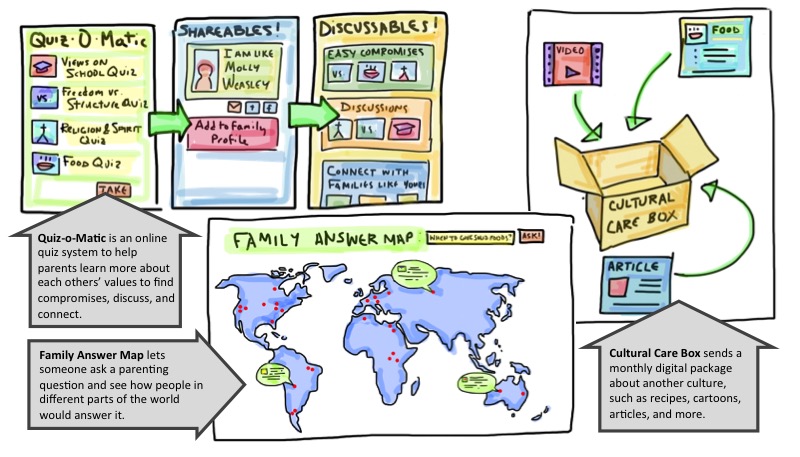My parents had two primary sources for parenting advice: my grandparents and the Dr. Spock book. If you are a parent today, you know that this is no longer the case! Millions of sources in printed literature, online, and in your local community all have opinions on how you should parent! How do parents manage so many diverse opinions? What happens when the values of the parents conflict with their community, with other family members, or even with each other? We thought that cross-cultural families (where the two parents are from different cultures or who are raising their child in a different culture from their own) may have a particularly salient perspective to offer on these important questions.
The idea for this project grew out of a workshop on family technologies. Over the last two years, I’ve had the honor of working with three great collaborators — Sarita Schoenebeck, Shreya Kothaneth, and Liz Bales — to try to understand cross-cultural parenting and to find opportunities for technology to help. All four of us are members of cross-cultural families (in one way or another) and we wanted to learn more about this fascinating phenomenon, so we interviewed parents from 18 cross-cultural families all around the United States. We investigated how these families respond to conflicts while integrating diverse cultural views, as well as how they utilize the wealth of parenting resources available online in navigating their lives. In our upcoming CHI 2016 paper (available as a pre-print here), we share what these parents told us about how these families find and evaluate advice, connect with social support, resolve intra-family tensions, incorporate multicultural practices, and seek out diverse views. But, what I want to share here are three design ideas for new technology that were inspired by these interviews. We think that they may not only be good for cross-cultural families but may help all kinds of families better integrate multiple cultures into everyday life. We show some very preliminary sketches of these ideas below:
For me personally, this project was fascinating because I got to talk to so many interesting families. It was gratifying to think that maybe cross-cultural families could inspire ideas that could help all families and bring us all a little closer. What do you think, would you use any of the ideas we suggested in the paper if we went ahead and built it? Let us know below!

